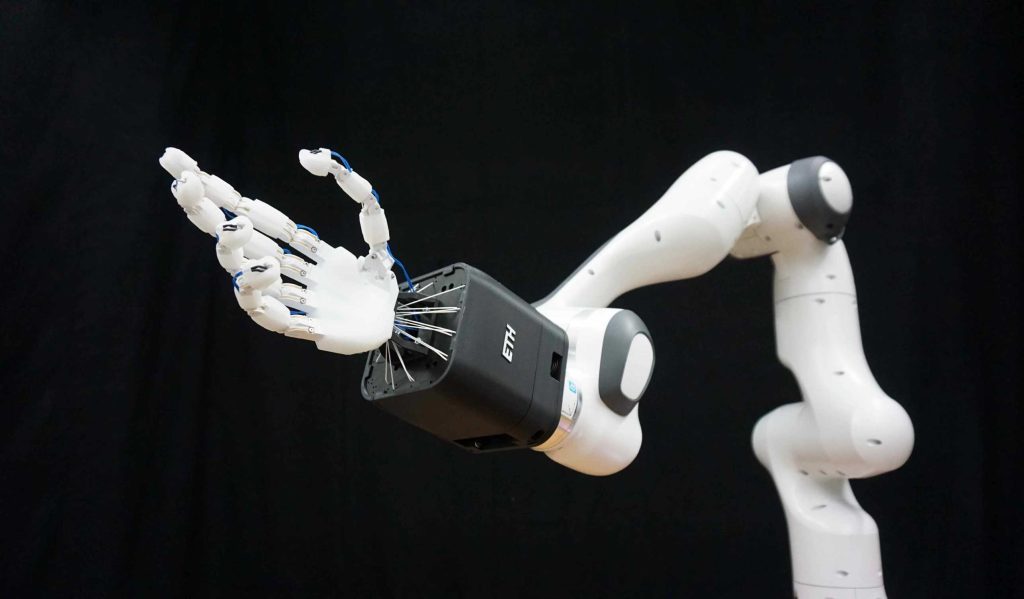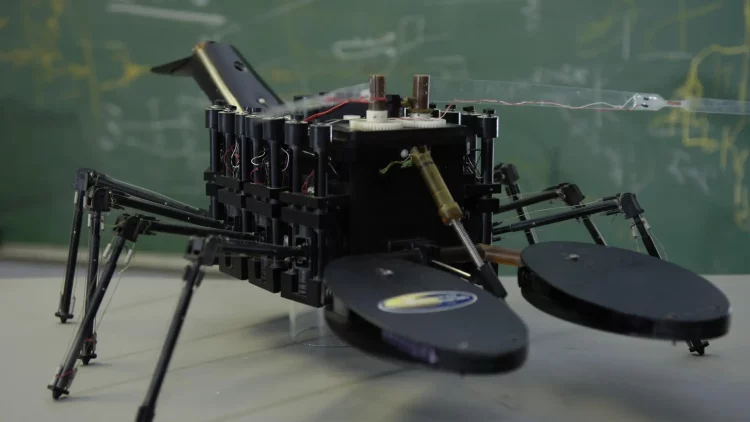Introduction
Robotics is rapidly advancing, not just in terms of mechanical design but also in how robots move, adapt, and interact with their environment. Biomimetic robots are at the forefront of this evolution. These robots are designed to mimic the movement patterns and behaviors of natural organisms to improve performance in real-world tasks, especially when it comes to energy efficiency, agility, and adaptability. By observing and replicating the gait of animals, robots can achieve greater efficiency, reduce energy consumption, and overcome obstacles more effectively.
This article explores how biomimetic robots are transforming fields such as robotic mobility, autonomous navigation, and energy management. We will examine the underlying principles of bionic movement, the engineering challenges and solutions involved, and how these robots are enhancing both the performance and sustainability of robotic systems in a wide range of applications.
1. The Concept of Biomimicry in Robotics
1.1 What Is Biomimicry?
Biomimicry, or biomimetics, refers to the practice of drawing inspiration from nature’s designs, processes, and systems to solve complex human problems. In the context of robotics, biomimicry involves the replication of biological systems—such as the movement of animals or the structure of plants—to enhance the functionality of robots. Biomimetic robots are designed to emulate the physical behaviors of living organisms to improve their mobility, efficiency, and effectiveness.
The gait of animals—how they move their legs or other appendages—has long been a subject of study. By analyzing how different species of animals walk, run, or fly, engineers can translate these natural movements into more efficient robotic designs.
1.2 The Role of Biomimetic Robots in Robotics
Biomimetic robots are particularly important because they offer a way to design robots that interact better with their environment. Instead of being limited to rigid movement systems, these robots incorporate organic, fluid motion patterns that make them better suited for tasks such as:
- Navigating uneven terrain
- Performing delicate manipulations
- Conserving energy during operation
By mimicking animals’ energy-efficient locomotion, robots can adapt to different environments more easily and accomplish tasks that require a high degree of precision and agility.
2. The Science of Biomimetic Gait
2.1 Gait in the Animal Kingdom
In nature, animals have developed a wide range of gait patterns to suit their environmental needs. These include walking, running, swimming, and flying, each optimized for different terrains and functions. Some of the key types of gait in animals are:
- Walking: A basic gait that provides stability and energy efficiency, commonly used by land animals such as humans, dogs, and horses.
- Running: An energetic form of locomotion used by faster land animals like cheetahs and gazelles. These animals use specialized gaits that allow them to cover large distances quickly with minimal energy expenditure.
- Jumping: Animals such as frogs and kangaroos utilize jumping to cover large distances or navigate challenging terrains, and their jumps are highly energy-efficient.
- Swimming: Marine animals, like fish and whales, exhibit a wide range of efficient swimming techniques, from undulating fins to the more rigid flippers of certain species.
- Flying: Birds, insects, and bats have evolved to use air currents, flapping, and gliding to move efficiently through the air.
Each of these gaits is optimized for energy efficiency, speed, and terrain adaptability. By understanding and replicating these natural movements, roboticists can create robots that are not only more efficient but also capable of performing complex tasks that would be impossible with traditional, rigid designs.
2.2 Translating Gait to Robotics
Replicating the movement of animals in robots involves creating machines that can mimic the biomechanics of biological systems. Some of the critical elements to consider when translating animal gait into robotic designs include:
- Joint articulation: Just like animals have joints and muscles that allow fluid movement, robots need advanced actuators and flexible structures to replicate these motions.
- Balance and stability: Animals can walk, run, or fly without falling over due to their finely-tuned balance systems. Robots must incorporate sensors, gyroscopes, and dynamic balancing algorithms to maintain stability.
- Energy efficiency: Animals use a variety of muscle movements and strategies to conserve energy while moving. Similarly, robots must use advanced control algorithms and efficient power management systems to reduce energy consumption during movement.
- Adaptive behavior: In nature, animals adjust their gait based on environmental factors such as terrain, obstacles, and speed. Biomimetic robots must be able to analyze their surroundings and adjust their movements accordingly.

3. Biomimetic Robots: Engineering Challenges and Solutions
3.1 The Challenge of Flexibility
One of the main challenges in designing biomimetic robots is creating flexible materials that can replicate the highly dynamic and flexible nature of biological organisms. While traditional robots use rigid frames and motors, biomimetic robots require components that can mimic the soft, adaptable characteristics of biological systems. For example, the flexible joints and muscle-like actuators in biomimetic robots are designed to work in ways that traditional machines cannot.
Soft robotics has become a significant field in addressing this challenge. By using soft actuators (made of materials such as elastomers and hydrogels), robots can achieve highly flexible movement, much like biological creatures do with their muscle-tendon systems.
3.2 Power Efficiency and Energy Management
Energy consumption is another crucial consideration in the development of biomimetic robots. Unlike traditional robots, which typically rely on bulky, power-hungry motors and batteries, biomimetic robots aim to reduce energy usage while maintaining high performance. To do so, engineers are increasingly using low-energy actuators and power-efficient control algorithms.
A promising approach is to draw inspiration from animals’ energy-saving gaits. For example, humans use energy-storing mechanisms like tendons to reduce muscle fatigue while running. Mimicking these mechanisms, robots can incorporate spring-loaded actuators or compliant materials that store and release energy, much like an animal’s tendons.
3.3 Sensory and Feedback Systems
To replicate the responsiveness of animals, biomimetic robots must have real-time sensory feedback systems. Animals continuously adjust their movements based on sensory information from their environment, such as visual, tactile, and proprioceptive data. Biomimetic robots are equipped with advanced sensors, including LIDAR, gyroscopes, and accelerometers, that enable them to adapt their movements and respond to environmental challenges.
4. Applications of Biomimetic Robots
4.1 Robot Mobility in Challenging Environments
Biomimetic robots are particularly well-suited for environments that are difficult for traditional robots to navigate, such as rough terrain, disaster zones, or underwater. For instance, robots that mimic the gait of insects can easily climb over obstacles, while those inspired by fish and birds can operate in challenging aquatic or aerial environments.
One notable example is Boston Dynamics’ Cheetah Robot, which is designed to mimic the movement of a cheetah in running. This robot can achieve high-speed locomotion with greater stability and energy efficiency than traditional robots.
4.2 Industrial Applications
In industries such as logistics and manufacturing, biomimetic robots are being employed to carry out tasks that require high agility and energy efficiency. Robots inspired by human gait can navigate factory floors or warehouses, delivering goods or performing assembly tasks with minimal energy consumption.
4.3 Healthcare Robotics
Biomimetic robots are also making an impact in the field of healthcare. For example, robots that mimic the delicate hand movements of surgeons can perform minimally invasive surgeries with greater precision and stability. Moreover, rehabilitation robots, designed to help patients recover from injuries, can replicate the motions of human limbs, aiding in physical therapy.
5. The Future of Biomimetic Robotics
5.1 Advancements in Artificial Intelligence
As AI and machine learning continue to evolve, the adaptive capabilities of biomimetic robots will improve. With better environmental awareness and decision-making algorithms, robots will become more autonomous and capable of handling even more complex tasks without human intervention.
5.2 Biohybrids: Integrating Robotics with Living Systems
Another exciting frontier in biomimetic robotics is the development of biohybrids, where robotic systems are combined with biological organisms. Researchers are experimenting with integrating robotic actuators and biological tissues to create robots that can self-repair or adapt even more efficiently to environmental changes.
Conclusion
Biomimetic robots, by mimicking the energy-efficient gaits of animals, represent the next frontier in robotic mobility and performance. Through advancements in materials, actuators, sensors, and AI, these robots are set to transform industries ranging from healthcare to logistics, offering more efficient, adaptive, and energy-efficient solutions. As technology continues to evolve, the potential for biomimetic robots to revolutionize our interaction with machines is limitless, unlocking new possibilities for the future of robotics and automation.











































